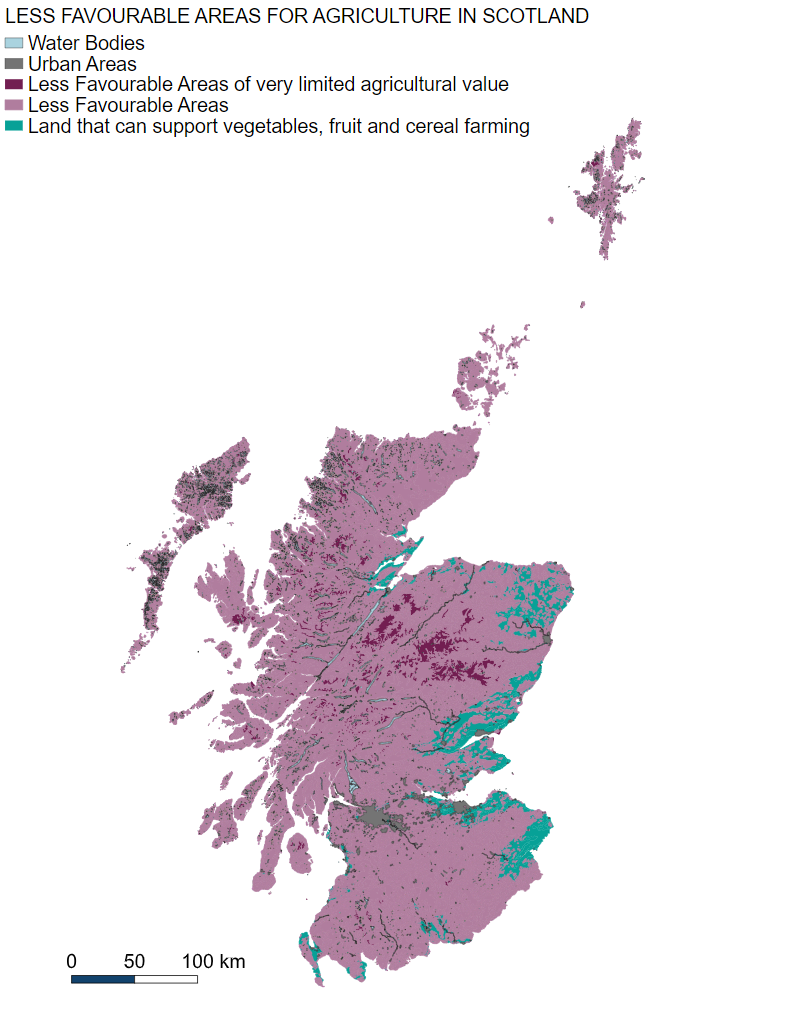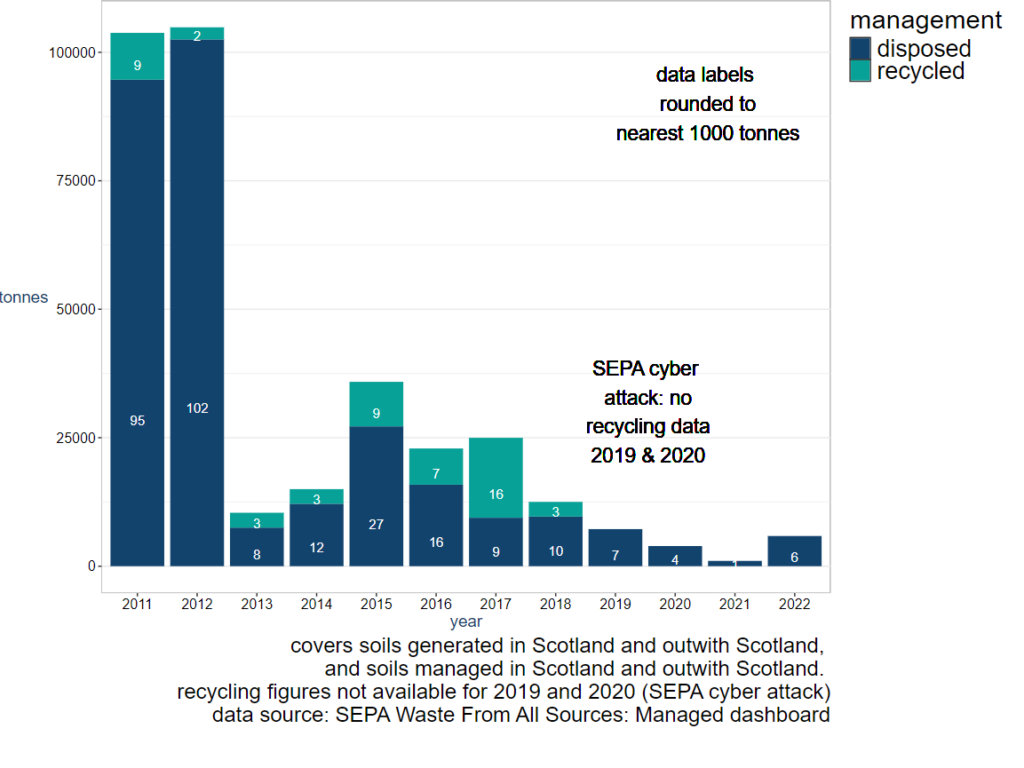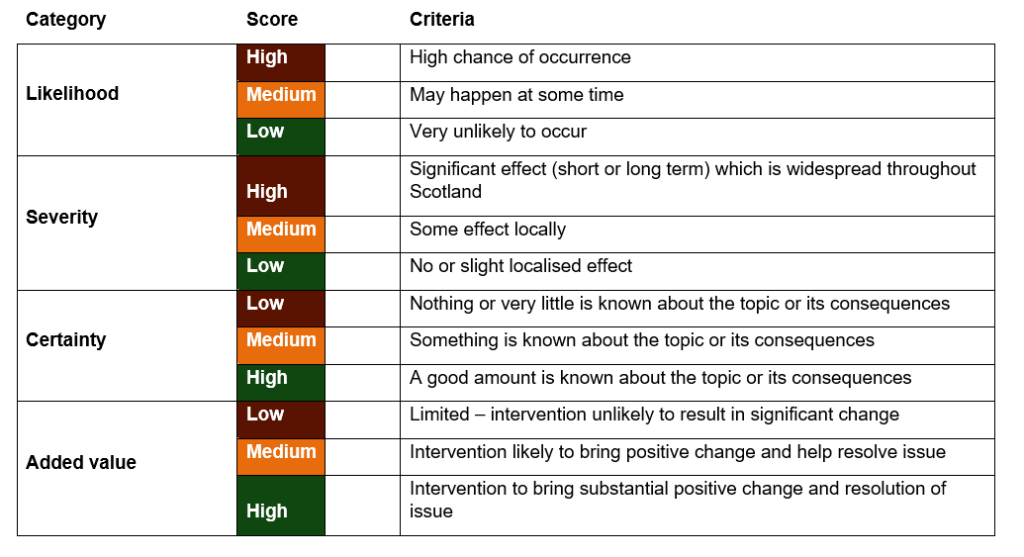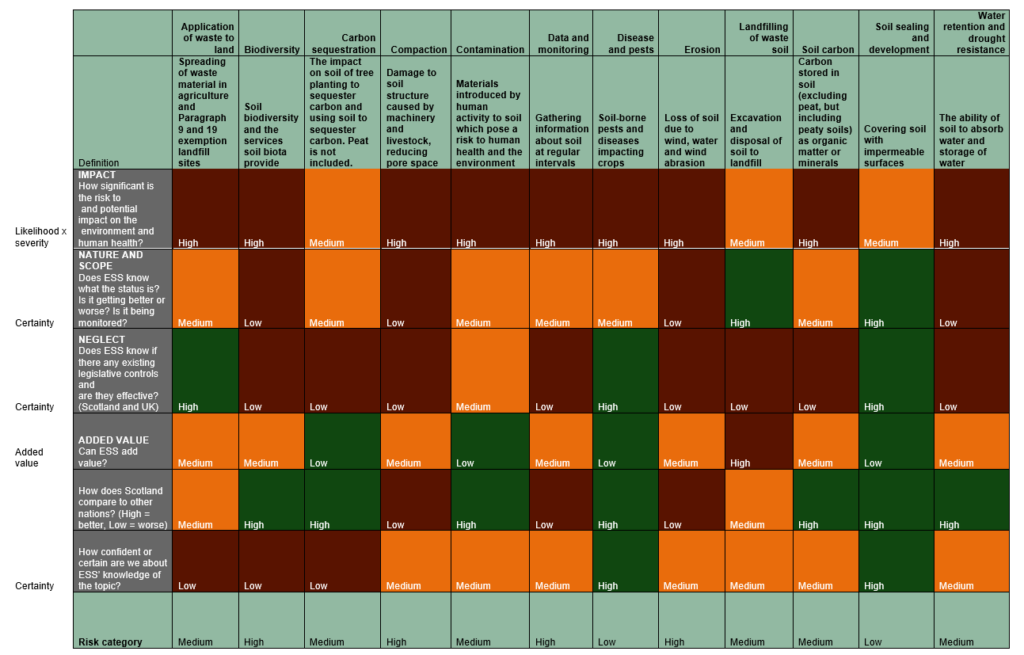The risks to Scotland’s soils: a scoping report
This report considers the risks posed to soil in Scotland. It also considers the risks that soils and the way that humans interact with them pose to the wider environment.
October 2024
The risks to Scotland’s soils: a scoping report – October 2024.pdf
Download pdf (1.21 MB)
This document may not be fully accessible.






